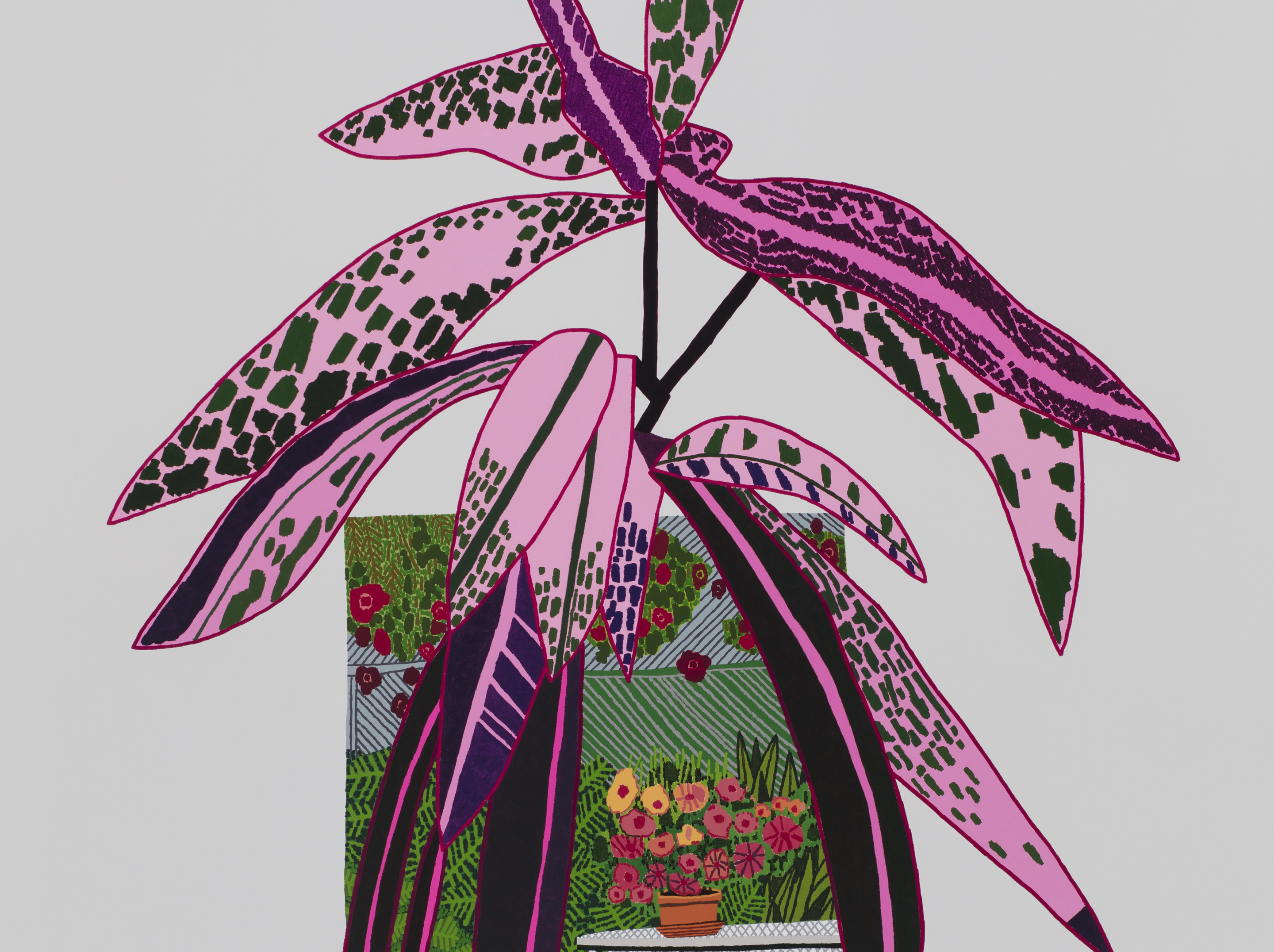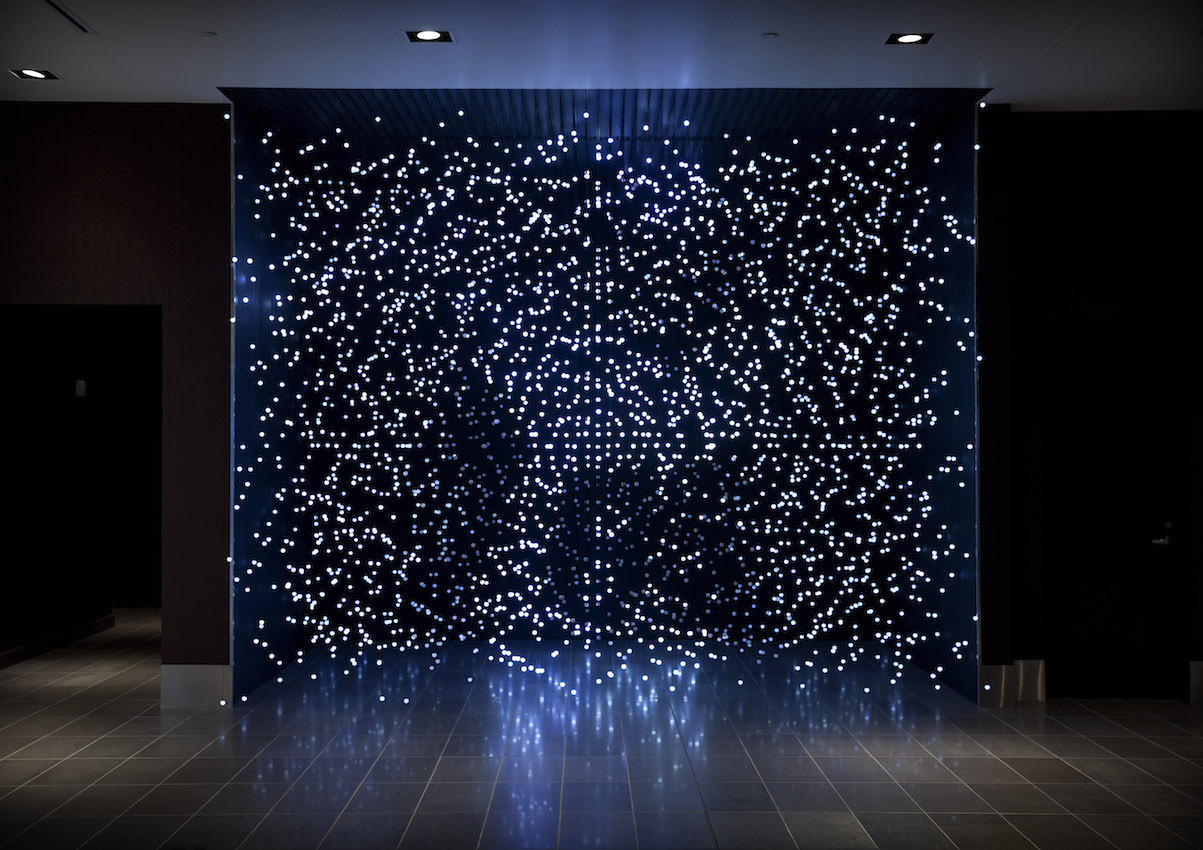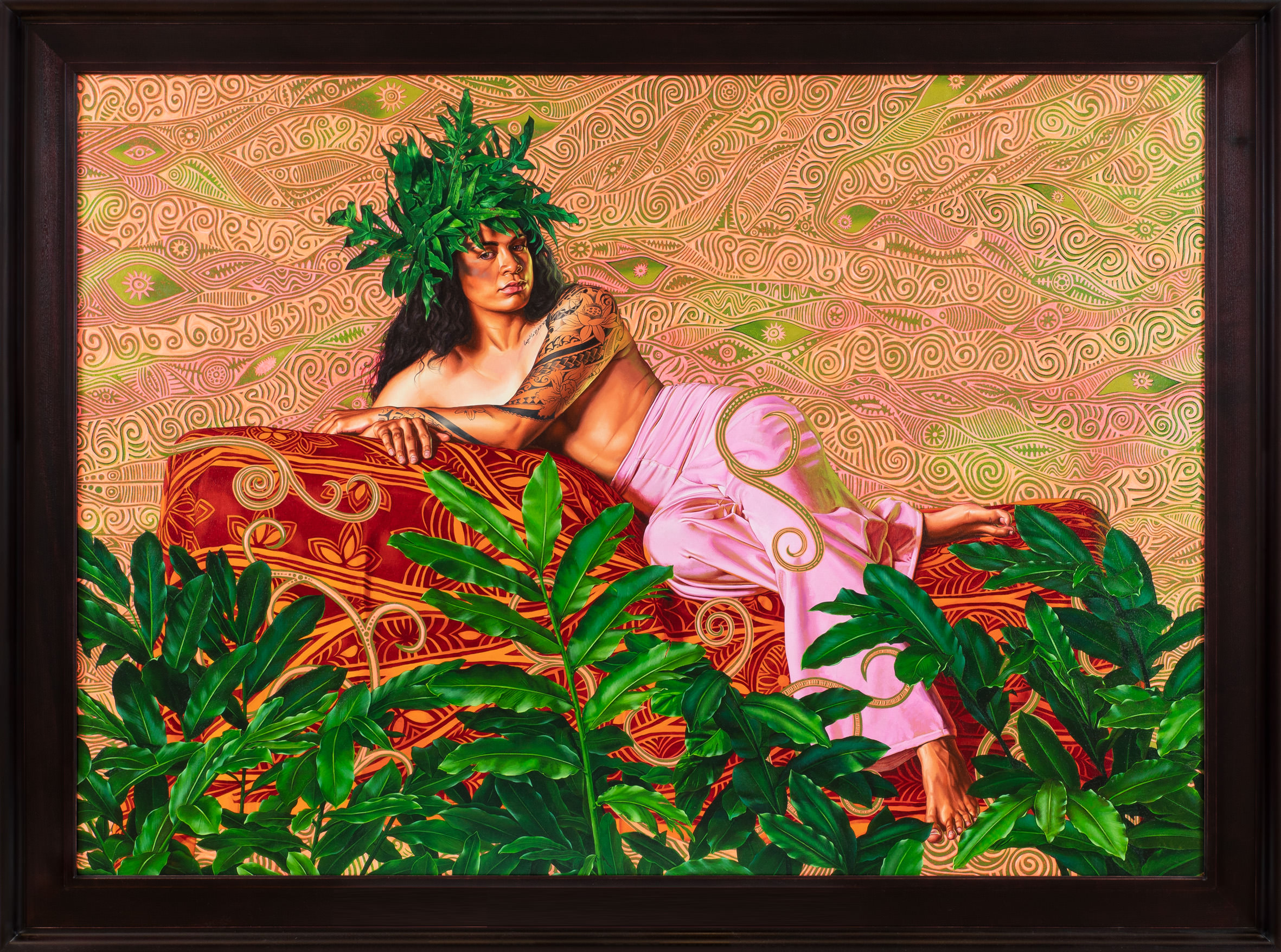Alex Katz turned 92 over the summer and is showing no signs of slowing down. Whitewall spoke with him just before he was headed for the season to his studio and home in Maine, where he continues to draw and paint his iconic dancers and landscapes. At the time, he had half a dozen exhibitions up around the world—four solo, two group. One was at Gavin Brown’s enterprise (it closed August 3), and included portraits of dancers in motion, landscapes, and cutout sculptures, all completed between 2018 and 2019.
This week, he’ll be honored at the annual TWO x TWO for AIDS and Art benefit in Dallas, hosted by Howard and Cindy Rachofsky and Lisa and John Runyon, benefiting amfAR and the Dallas Museum of Art. He’ll receive the amfAR Award of Excellence for Artistic Contributions to the Fight Against AIDS. “Alex Katz is an anchor in the contemporary art community and his influence on young painters will undoubtedly continue for generations to come,” said Howard Rachofsky. Also in Dallas this fall, he’ll have a solo show at the Dallas Museum of Art open (on view through March 22, 2020).
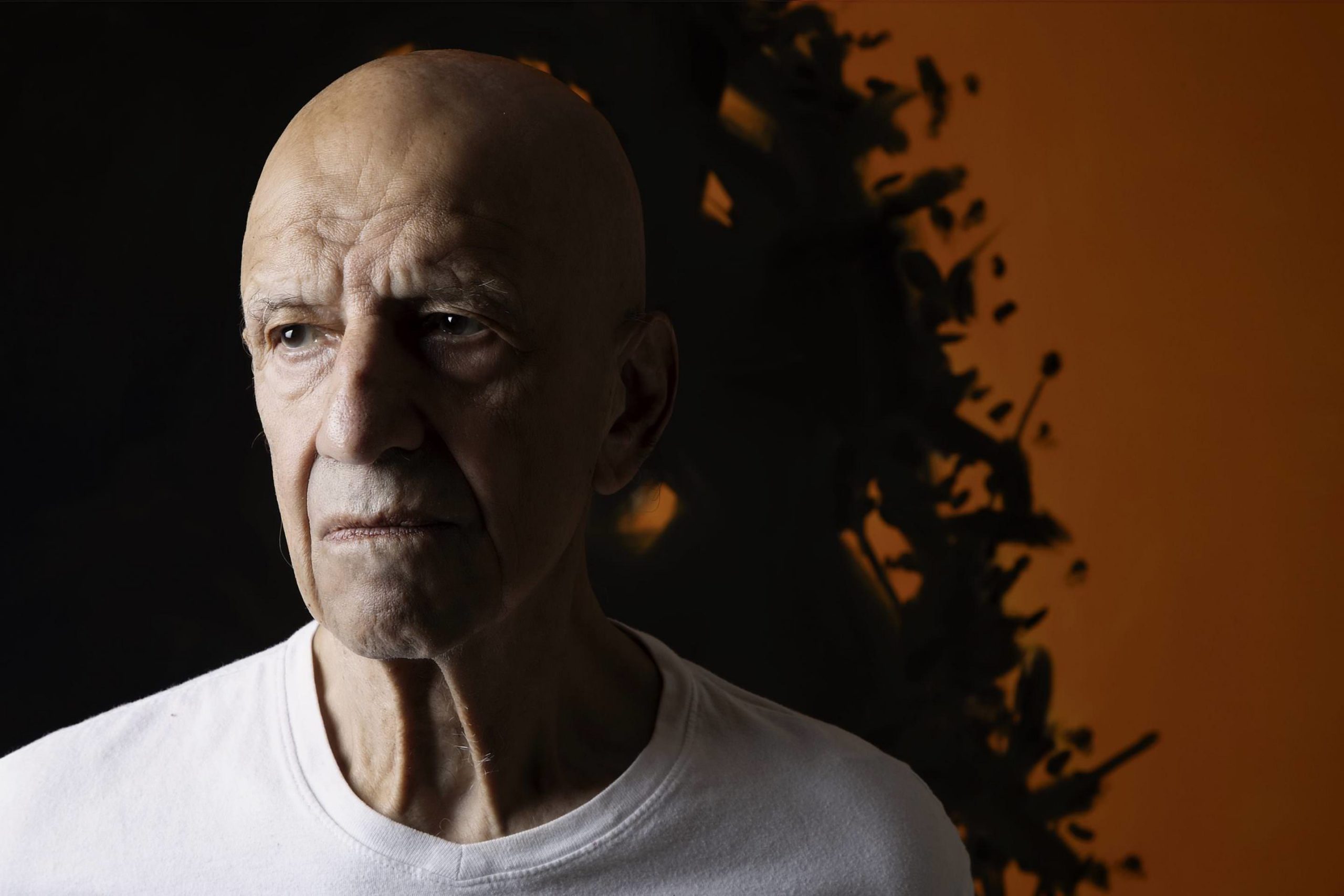
Photo by Steve Benisty.
Speaking with us, he described this time in his life as the most productive he’s ever had. He’s still as competitive as ever, making large works, taking big risks, and painting wet on wet. Katz is focused on living in the moment and creating images for the present. He wants us to see what he sees when we look at his paintings. As he joked with us, he’s “not a nice guy painting nice paintings.”
WHITEWALL: Your show at Gavin Brown is described as a year in the life. How would you describe that year?

Photo by Steve Benisty.
ALEX KATZ: I did a lot of work in that year. It all turned out really well.
I got involved with the Degas statues at The Met. I saw them just before I left [for Maine]. They made a big impression on me. I love the sculptures. I think the Degas sculptures are one of the great things in Western civilization. I decided to do nudes outdoors, and that was the plan of the summer.
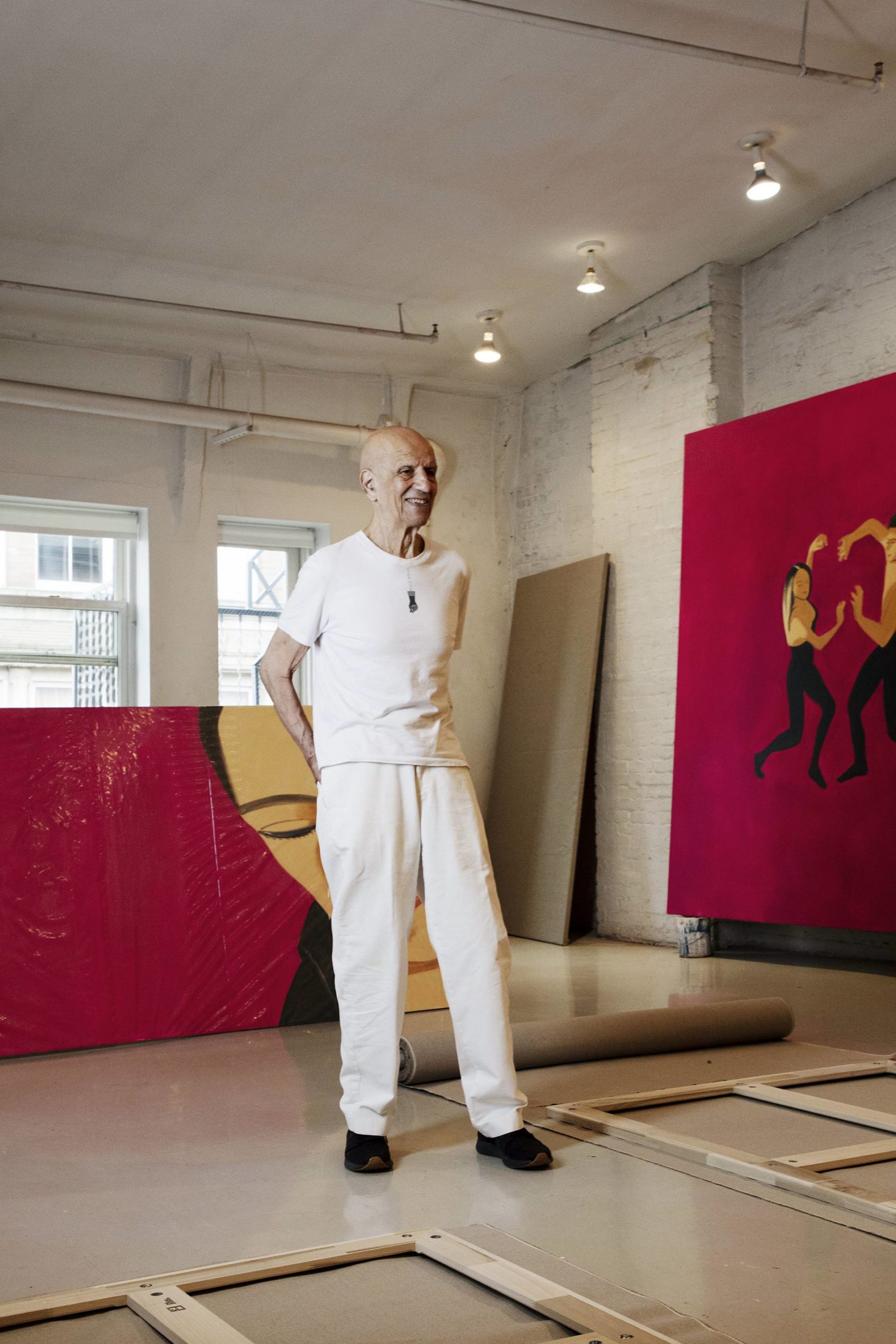
Photo by Steve Benisty.
Meanwhile, I was finding images as I was there and making sketches of the landscape images. And when I got back to the city, I went and made the landscapes that I had. And then I had a bad day where I couldn’t do anything, so I made a great big drawing, and I started to make it into new cutouts. They all worked out. The whole year was amazing. I’ll never have a year like that again.
WW: That was 2018 to 2019?
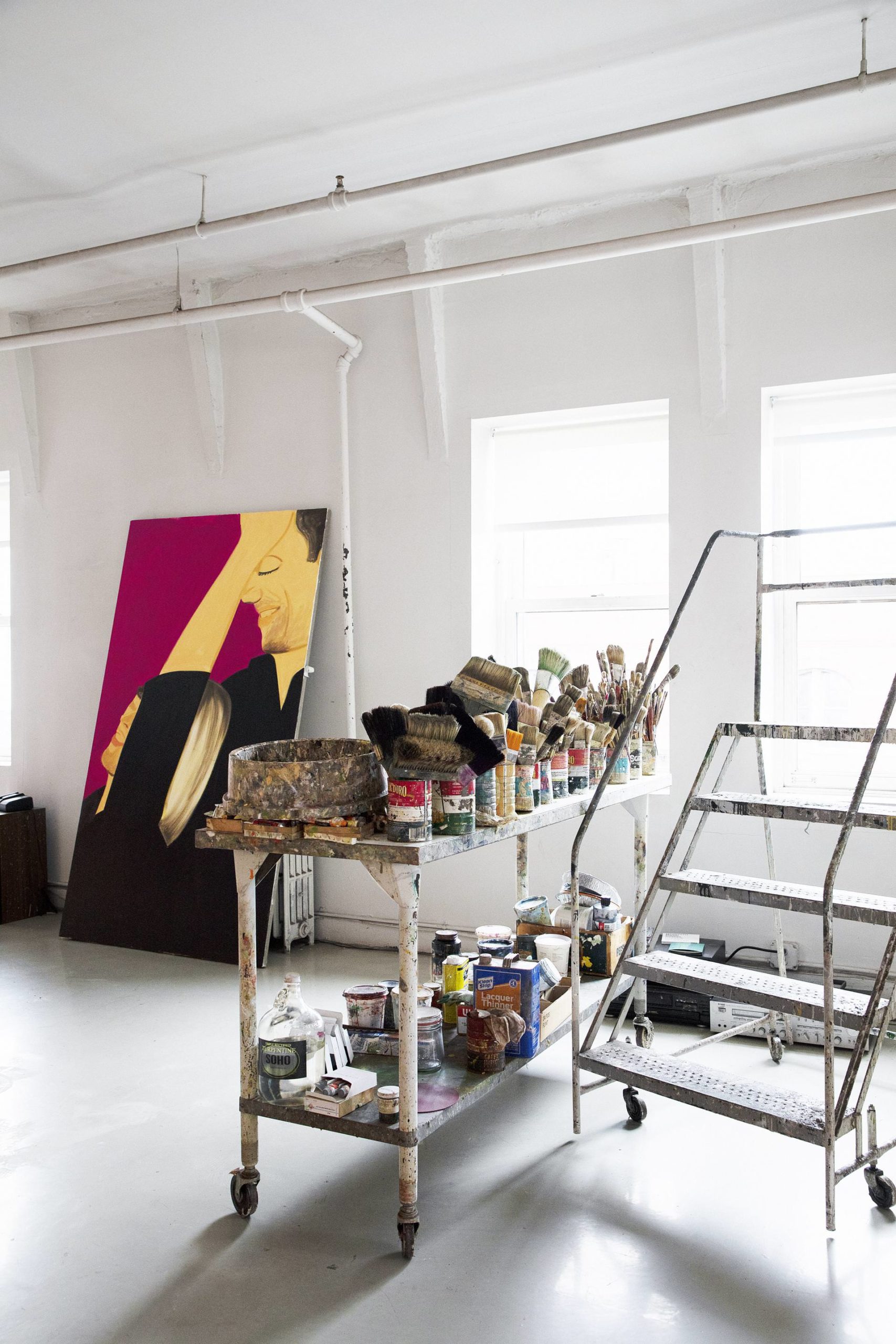
Photo by Steve Benisty.
AK: Yeah, it was. I cut everything out. We didn’t do any entertaining. I was going to bed at 8:30, 9:30.
WW: You’ve said recently that this current time in your life has been your most productive time.
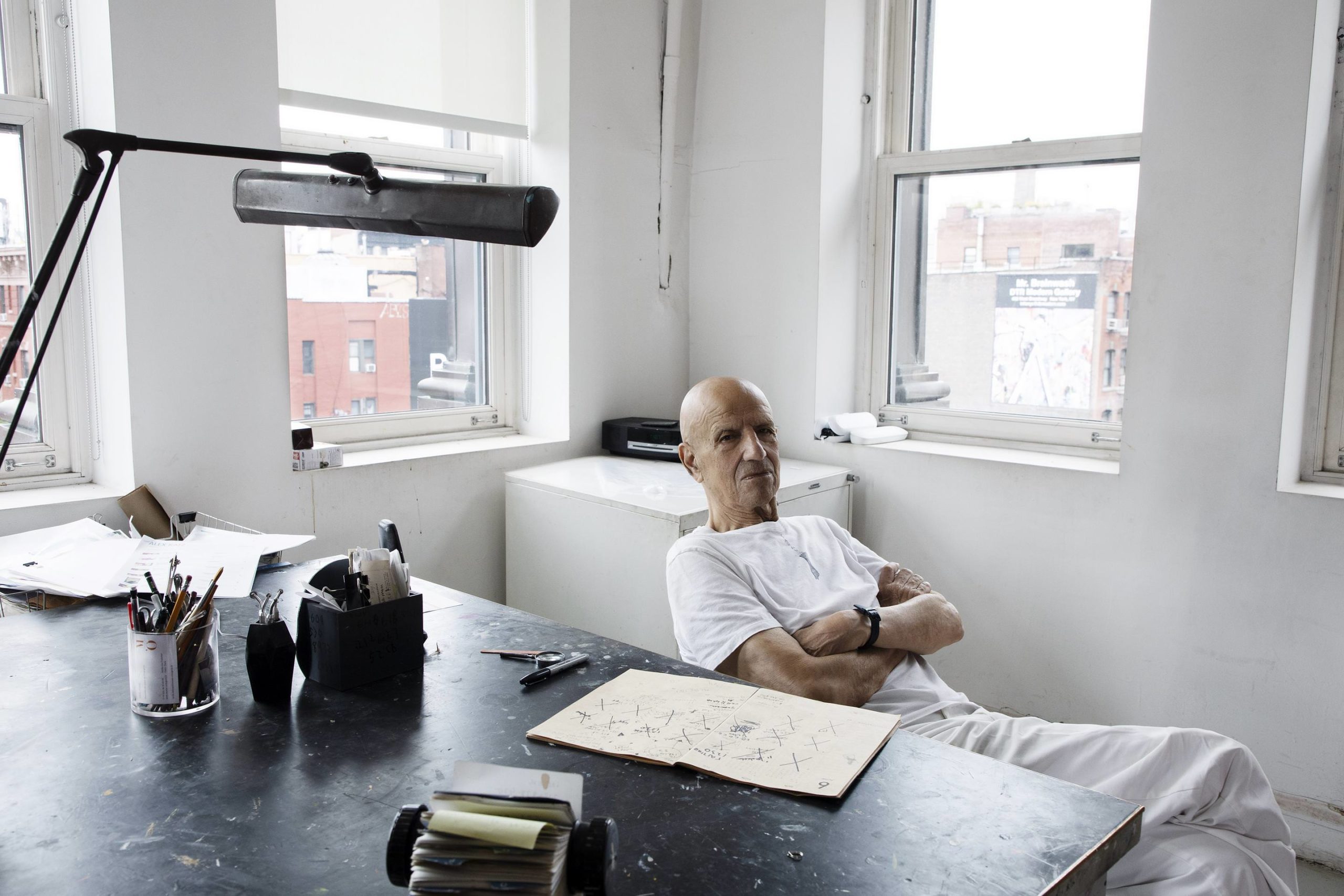
Photo by Steve Benisty.
AK: Yes, it’s the most productive time I’ve ever had.
WW: Why do you think that is?
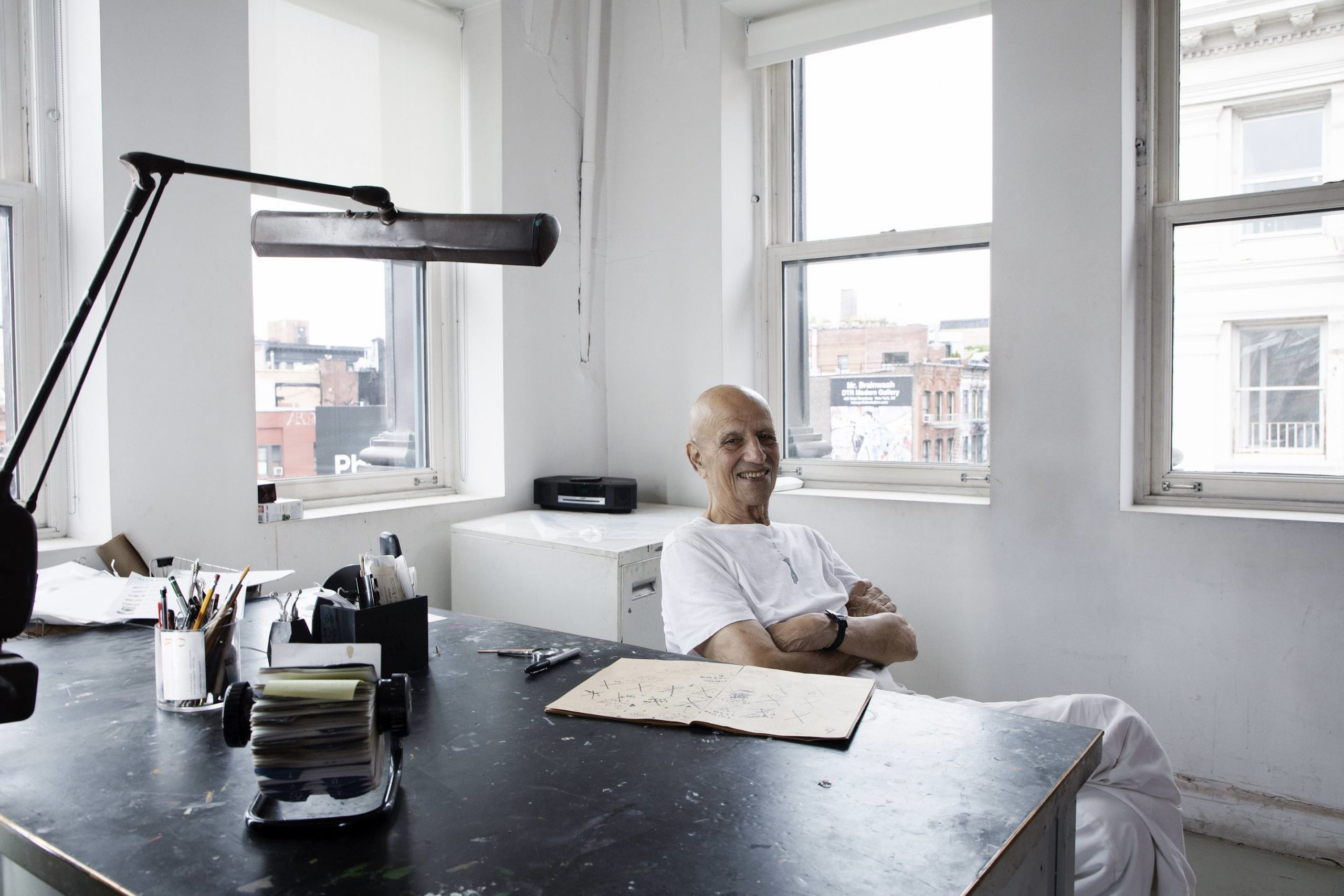
Photo by Steve Benisty.
AK: I don’t know. With these big landscapes, they are gestural and very large. They are wet on wet, and done right when I get to do it, finally. There is a lot of preparation, but when you paint it, it’s very scary. You put one coat of paint on the entire canvas, take another color, and work with it into the wet paint. There’s very little margin for error, and you have to rely on your instincts. Even with plenty of preparation, there is nothing on the canvas and it’s just wet and wet. It’s kind of scary and kind of fun.
WW: Does it happen then all at once?
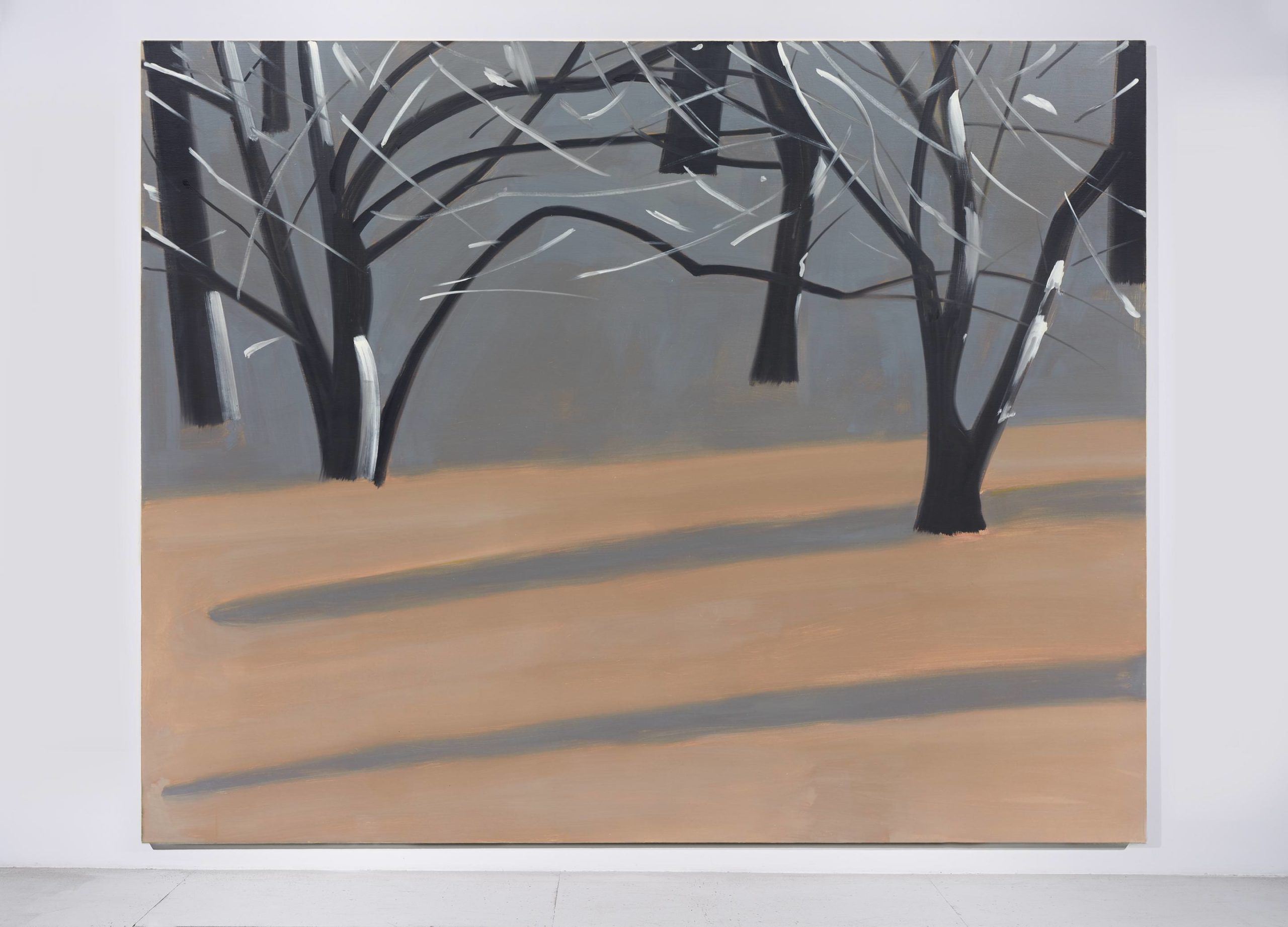
Alex Katz
South Light 2
2005
Oil on linen
96 x 120 inches
Courtesy of the artist and Gavin Brown’s enterprise, New York/Rome
AK: All at once. I don’t come back to it. You make it or you don’t. The paintings vary in risk and vary in success.
WW: Do you like the risk?
AK: Yes, I love it. I’m 92. What the hell, I got nothing to lose. What do I care? [Laughs]
WW: Tell us about your studio in Maine.
AK: The home is from 1954, the same place. But the studio—I used to paint in the barn attached to the house. At a certain point I started making money and my wife said, “Build yourself a big studio.” So I did what she told me.
WW: How often are you there?
AK: I go there for three months, every summer. I leave next week.
WW: How does it compare to your studio space in New York?
AK: The one in Maine has a higher ceiling, and it has two big, huge windows on either side, so it’s almost like being outdoors. The one in New York is larger and has skylights and windows all around it. They’re both big studios.
WW: You said you prepare a lot for the large paintings. What does that preparation look like?
AK: Well, it varies on the painting. The black-and-blue landscape came from riding in a car. I looked out the window, and went bing, there was an image. So when I got back to the house, I made a drawing and then a little painting. I may have made three little paintings. Then a six-by-eight painting. Then the large one.
On the red-and-black ones, those, I just had maybe three or four sketches, small, and I went right at it. The grass painting, I had paintings that were three-by-four or four-by-five feet of it and I had lots of drawings, lots of small paintings. The painting came out great, but I didn’t pay attention to the sketches when I painted it.
With the Degas thing, there are sketches and then I had models come and take all the poses. Then the hard part was after I got the pictures, cutting them up and deciding which one and what to do. That was the part that was really straining.
WW: Is there a way you prepare physically? A few years ago we spoke with you and you talked about your exercise regime, which is pretty impressive. Do you relate the staying in shape to being productive?
AK: I don’t have any physical problem painting the painting. I’m in really good shape for someone my age. I have a chin-up bar I use every morning.
WW: Has being fit always been important to you?
AK: I grew up with an athletic background. We were all athletes, my friends. I sort of drifted off, and I picked it up again. I played college basketball, but in my late thirties I didn’t like where my life was going—physically, it was deteriorating. I joined a gym and got very serious in my forties about working out.
I think if you are disciplined and do it properly, you get energy from working out. You don’t lose it. If you finish with a painting some days, you’re ready to go to sleep. Really totally knocked out.
The physical stuff gives you energy. You have to be careful you don’t get too seriously involved and you don’t get injured. That slows you down.
WW: We read that sometimes you’ve gone back to pictures that are decades old and changed them. Why?
AK: Not too often. It does happen. It always seems very funny to go back. I went back to one that was twenty-somewhat years later. I changed the sky from green to blue and the painting didn’t get any better or any worse. I thought that was really funny. [Laughs]
I had some guys in white shirts, I cut eight inches off the bottom, and made three paintings out of it. Things happen. Things bother you.
I had a painting I wasn’t sure if I should destroy or not. I pulled it out, and the guy who works for me said, “That’s a terrific painting.” And I looked at it and said, “Maybe it is, I don’t know.” It needed a glaze. Put the glaze on, and it became a terrific painting. It was sold, I think, three days later. Some things don’t add up right, but most things do more or less.
WW: Can you always tell if it’s not right?
AK: I can’t tell. There’s no way of telling what the hell you’re doing. People have to tell you. Time and people. And then the paintings change in 20 years—people look at them differently. The same painting becomes a different painting. For me, too.
WW: You’ve talked about having a sensitivity toward fashion.
AK: I love fashion. People tend to think of art as from the books, like this is the greatest masterpiece ever painted. But the thing is we change, it changes, everything is in motion. We don’t live in a time of absolutes anymore. It’s all variables. And fashion is in the moment. If it has style, it looks good 20 years later.
To get into the present tense is what my painting is about. So in that way, it relates to flowers and dancers. Flowers and dancers, and my paintings are all in the same place. There is no security in my life in painting.
WW: When you’re painting, is that when you are most present?
AK: It’s how I get into the present tense. I’m not trying to make a masterpiece for all time. I’m not trying to define what modern art is. I don’t believe in it all. I believe anything anyone does at any time can be art for me. There are no boundaries. I can get a kick out of a billboard, an old painting. I’m not held down to modern art. Modern art is a great heritage—I come from modern art, I started in modern art and it’s a part of me—but it has its limitations and people want security, so they look at the old. But I’m not dealing with security. No security here.
WW: You’ve also talked about how you have an optimistic outlook. Do you think you’re generally an optimistic person? Or is that just what you want to put out in the world?
AK: I want to give people something pleasant. I relate to the Impressionists, seeing the world with golden glasses. [Laughs] There are enough sad stories.
For one thing, I think it’s escapism, and the other, I think it’s trying to give people something pleasant in their lives. Professional painting has to do with finding your insides and addressing an audience. Those are the two things for me.
WW: Do you feel a competitive spirit when painting?
AK: Absolutely. I’m competing with everybody. I’m not a nice guy painting nice paintings. They are competitive paintings. I want to put them next to a lot of older paintings.
WW: You want to be the best, right?
AK: Absolutely. Ultimately, my paintings are about vision. I want you to see what I see. Everyone’s idea about what they see—they think it’s true because they see it through their eyes. But they don’t see it through their eyes, they see it through their culture. Culture determines how they see and what you see. I’m aggressive in that area.
You want to see painting through painting, and you want to see the vision through the painting. That’s what I admire so much in Cézanne. When I first started, I saw the whole world look like Cézanne.
When I paint pictures now, people are seeing things through my eyes. That’s what I want to do.




